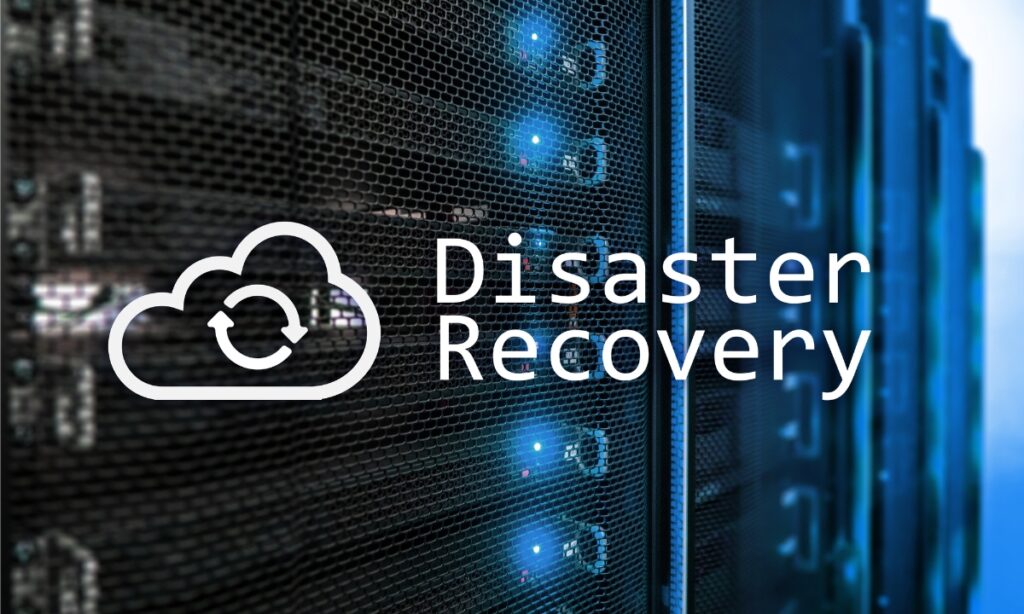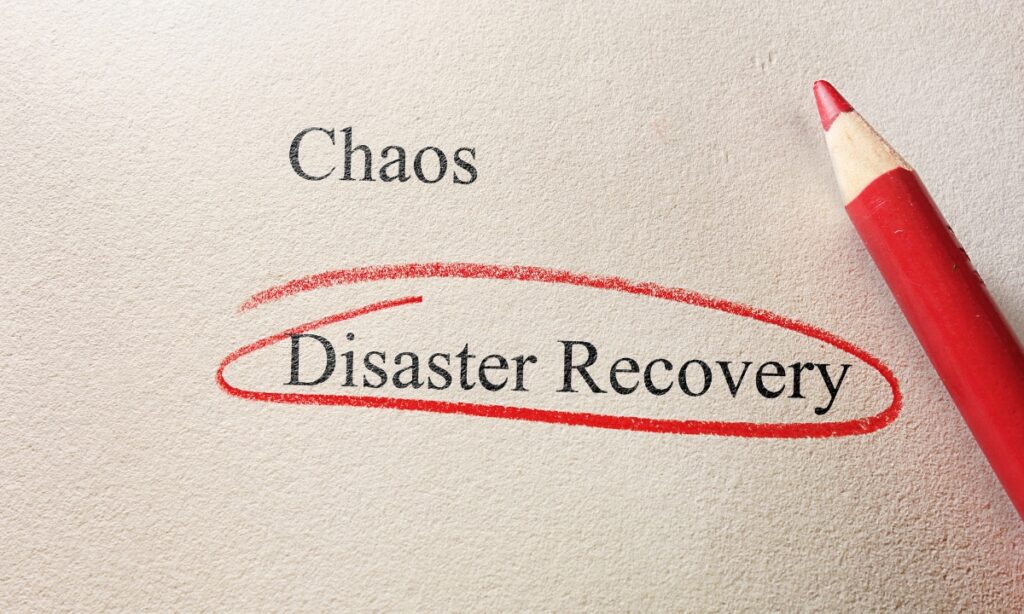Welcome to the world of disaster recovery support and how outsourced IT solutions providers can be your trusted ally in times of crisis. In this fast-paced business landscape, ensuring the safety and continuity of your valuable data is paramount. This is where disaster recovery support steps in to save the day!
Disasters can strike unexpectedly, be it a natural calamity or a cyber-attack. A comprehensive disaster recovery plan is essential to protect your business from potential data loss and prolonged downtime. But fear not, as outsourced IT solutions providers are here to lend their expertise and experience.
In this blog, we will explore the significance of disaster recovery, the benefits of partnering with outsourced IT solutions providers, and the steps involved in ensuring a smooth disaster recovery process. So, let’s dive in and discover how your business can thrive with reliable disaster recovery support.

Understanding Disaster Recovery Support
Disasters can strike at any moment, posing a significant threat to your business’s critical data and operations. That’s where disaster recovery support comes into play. In this section, we will delve deeper into what disaster recovery support entails and why it is vital for every business, regardless of its size.
Disaster recovery support involves creating a robust and proactive plan to safeguard your data and IT infrastructure from potential threats. It includes measures to restore operations swiftly after a disruptive event, minimizing downtime and ensuring continuity. By collaborating with outsourced IT solutions providers, you gain access to their expertise in crafting tailored disaster recovery strategies to meet your unique business needs.
Whether it’s safeguarding against cyber-attacks, natural disasters, or hardware failures, disaster recovery support provides the peace of mind and assurance that your business can quickly bounce back from any unexpected setbacks. Let’s explore the different facets of disaster recovery support and its immense value in securing your business’s future.
Key Components of Disaster Recovery Support
When it comes to disaster recovery support, several crucial components work together to ensure the resilience and continuity of your business. In this section, we will explore these essential elements that form the foundation of a robust disaster recovery plan.
- Data Backup and Recovery: This component involves regular and secure data backups to ensure that your critical information is safe and accessible in case of data loss. IT management services providers implement automated backup processes and conduct periodic recovery tests to verify data integrity.
- Business Continuity Planning: Business continuity planning outlines procedures to sustain essential business functions during a crisis. It includes identifying vital processes, establishing alternative work arrangements, and ensuring seamless operations even amidst disruptions.
- IT Infrastructure Protection: Disaster recovery support encompasses safeguarding your IT infrastructure from potential threats. This includes implementing advanced cybersecurity measures, firewalls, and encryption protocols to protect sensitive data.
- Incident Response Strategies: In the event of a disaster, swift and well-coordinated incident response is crucial. Disaster recovery support teams develop incident response strategies to mitigate the impact of disruptions and restore services promptly.
- Testing and Training: Disaster recovery support is not a one-time endeavor. Regular testing and training exercises ensure that your team is well-prepared to execute the recovery plan effectively when faced with real-life situations.
By understanding and implementing these key components, your business can proactively address potential risks and enhance its ability to recover swiftly from any disaster. With the guidance of outsourced IT solutions providers, you can confidently face unforeseen challenges and safeguard your business’s operations and reputation.
Benefits of Outsourced Disaster Recovery Support
Opting for outsourced disaster recovery support offers numerous advantages that can significantly impact the resilience and success of your business. Let’s delve into the key benefits of partnering with a reputable IT solutions provider for disaster recovery:
- Expertise and Experience: Outsourced providers bring in-depth knowledge and experience in disaster recovery planning and implementation. Their expertise ensures that your recovery strategies are comprehensive, effective, and tailored to your specific needs.
- Cost-Effectiveness: Building an in-house disaster recovery team can be costly and resource-intensive. By outsourcing, you gain access to a team of experts at a fraction of the cost, saving on hiring, training, and maintaining dedicated staff.
- Access to Advanced Technologies: Reputable IT solutions providers stay up-to-date with the latest advancements in disaster recovery technologies. By partnering with them, your business benefits from cutting-edge solutions that enhance data protection and recovery capabilities.
- Scalability and Flexibility: Outsourced disaster recovery support offers the flexibility to scale your recovery plan based on your business’s evolving needs. Whether you are a small business or a large enterprise, the outsourced solution can adapt to your requirements.
- Focus on Core Competencies: With disaster recovery handled by experts, your internal team can focus on core business functions, driving growth and innovation.
By leveraging the expertise and resources of outsourced disaster recovery support, your business gains a competitive edge, bolstering its ability to recover swiftly from any catastrophe and continue operations seamlessly.

Implementing a Comprehensive Disaster Recovery Plan
The successful implementation of a comprehensive disaster recovery plan is crucial to ensuring your business’s resilience in the face of unexpected disruptions. Here are the key steps involved in the process:
- Risk Assessment: Begin by conducting a thorough risk assessment to identify potential threats and vulnerabilities to your IT infrastructure and data. Understanding the specific risks enables you to prioritize recovery efforts effectively.
- Define Recovery Objectives: Clearly define the recovery time objectives (RTO) and recovery point objectives (RPO) for different systems and applications. This helps establish the maximum acceptable downtime and data loss thresholds.
- Select Recovery Strategies: Based on the risk assessment and recovery objectives, choose appropriate recovery strategies for different scenarios. These strategies may include data backups, failover systems, and alternative communication channels.
- Test and Validate: Regularly test and validate your disaster recovery plan to ensure its effectiveness. Conduct simulated recovery exercises to identify any gaps or weaknesses and make necessary adjustments.
- Training and Awareness: Train your employees on disaster recovery procedures and raise awareness about the importance of their roles in the event of a disaster. A well-informed workforce contributes significantly to the success of the recovery plan.
By following these steps and partnering with a reliable IT solutions provider, you can implement a robust disaster recovery plan that safeguards your business from the impact of unforeseen events.
Regular Maintenance and Continuous Improvement
Disaster recovery planning is not a one-time task; it requires ongoing maintenance and continuous improvement to remain effective. Here are the key aspects to focus on:
- Regular Testing: Conduct regular tests of your disaster recovery plan to ensure that all components are functioning correctly. This includes testing data backups, failover systems, and communication channels.
- Updates and Upgrades: Keep your disaster recovery plan up-to-date with the latest technologies and best practices. Regularly review and upgrade your IT infrastructure to align with the changing business needs.
- Employee Training: Provide ongoing training to your employees on disaster recovery procedures. As your business evolves, new employees should be well-versed in the recovery plan and their roles during an emergency.
- Risk Assessment Reviews: Periodically review your risk assessment to identify any new threats or vulnerabilities. Adjust your recovery strategies accordingly to address emerging risks.
- Learn from Incidents: If a disaster occurs, conduct a thorough post-incident review. Analyze the response to identify areas for improvement and implement corrective actions.
By prioritizing regular maintenance and continuous improvement, your business can maintain a resilient disaster recovery capability, ensuring the ability to recover quickly and minimize downtime in the event of a disaster.
Choosing the Right Outsourced IT Solutions Provider
Selecting the right outsourced IT solutions provider for disaster recovery support is a crucial decision. Here are some essential factors to consider:
- Expertise and Experience: Look for a provider with extensive experience in disaster recovery planning and implementation. Check their track record and client testimonials to assess their expertise.
- Customized Solutions: Ensure that the provider offers tailored disaster recovery solutions that align with your specific business needs and requirements.
- Response Time: Evaluate the provider’s response time during emergencies. Quick response and proactive support are critical during a disaster.
- Security Measures: Verify the provider’s security measures and protocols to safeguard your data and systems.
- Support and Availability: Choose a provider that offers round-the-clock support and availability, as disasters can strike at any time.
By carefully evaluating potential IT solutions providers, you can find a reliable partner who will assist you in creating a robust disaster recovery strategy, ensuring the protection of your business in times of crisis.

The Road to Resilience: Implementing Your Disaster Recovery Plan
Now that you have a well-crafted disaster recovery plan and the right outsourced IT solutions provider, it’s time to put everything into action. Follow these steps to ensure a seamless implementation:
- Communication: Communicate the disaster recovery plan to all relevant stakeholders and employees. Make sure everyone understands their roles and responsibilities during a crisis.
- Testing and Training: Regularly test your disaster recovery procedures and conduct training sessions for your team. This will familiarize them with the process and boost their confidence in handling emergencies.
- Monitor and Update: Keep a close eye on your disaster recovery system’s performance and make necessary updates to address any vulnerabilities.
- Learn from Incidents: If a disaster occurs, conduct a thorough review to identify areas for improvement and refine your plan accordingly.
By taking proactive steps and staying prepared, you can build resilience into your business and ensure it continues to thrive even in the face of adversity. Remember, disaster recovery is not a one-time task; it’s an ongoing process that demands continuous attention and refinement. With the right mindset and support, your business can navigate through any storm with confidence. Call 911 PC Help at 415-800-1130 today to get started or schedule your free consultation now!
